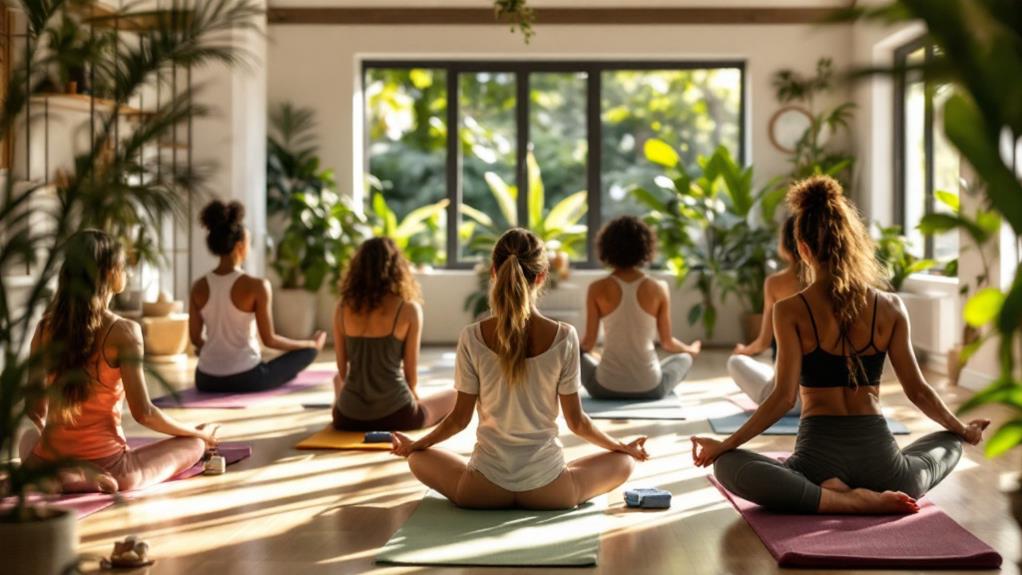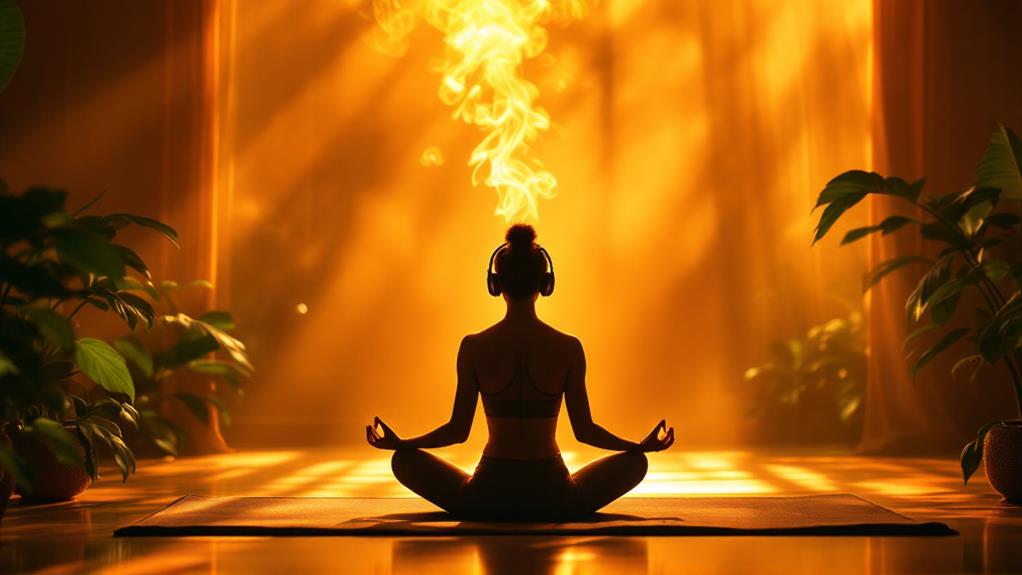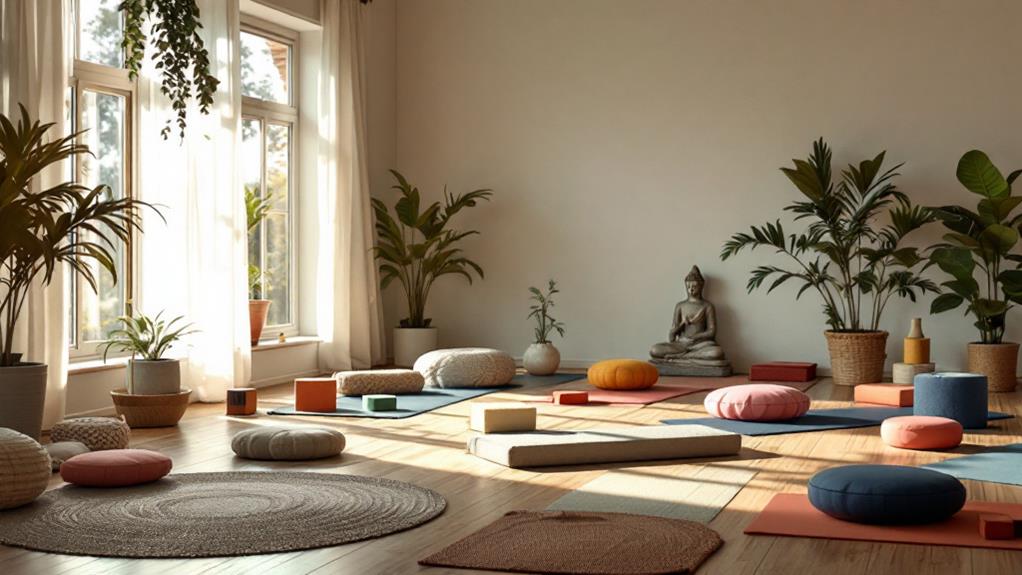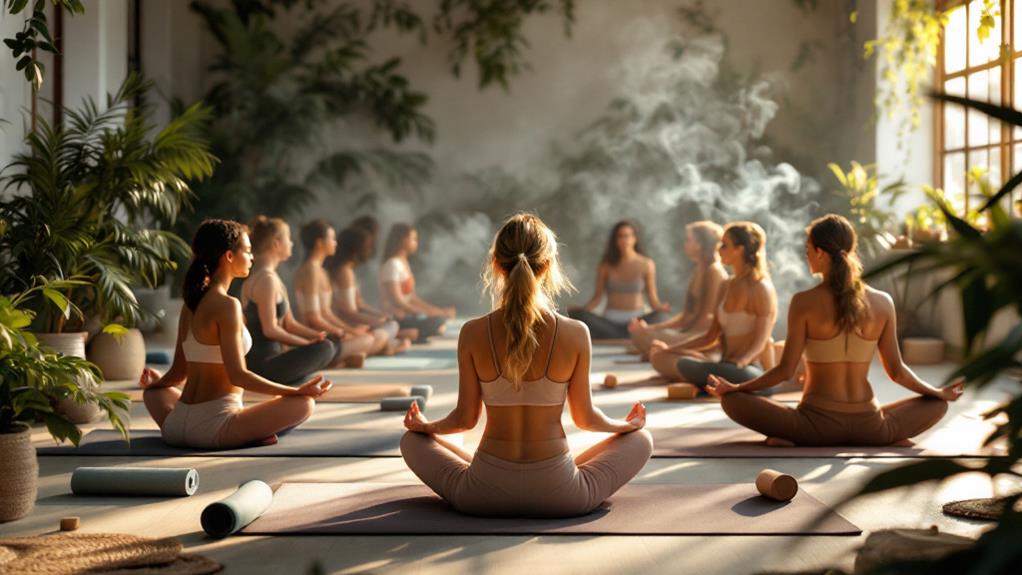Basic Yoga Poses for Beginners: Get Started With Confidence
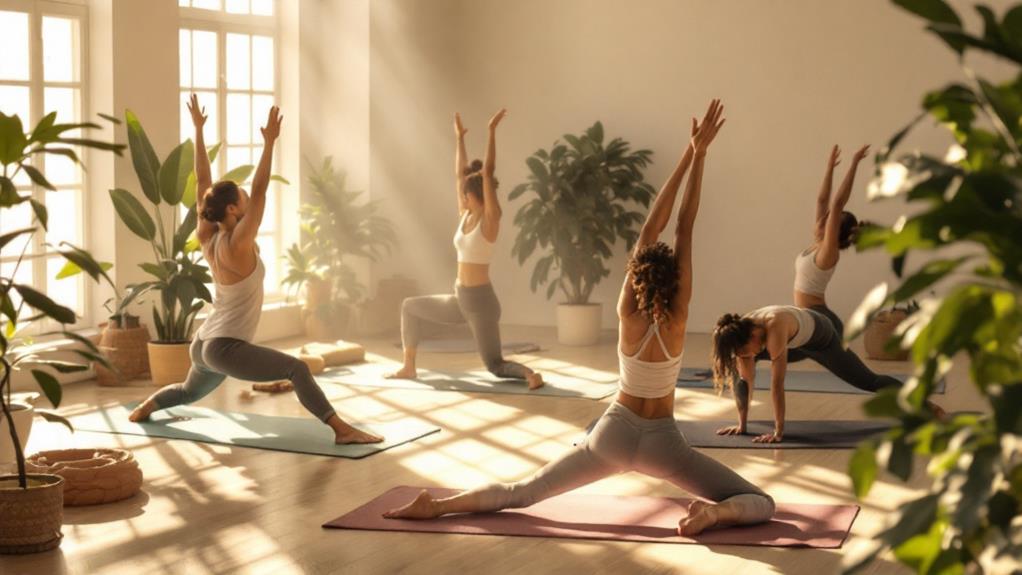
Start your yoga expedition with confidence by practicing key poses like Mountain Pose, which improves alignment and grounding, and Downward-Facing Dog, which stretches and strengthens. Incorporate Child's Pose for relaxation, and Warrior I to build strength and stamina. Focus on proper alignment to optimize the benefits and guarantee safety. Set aside time each day for practice, keeping sessions short and intentional. Engage with a supportive community for encouragement and stay committed by tracking your progress. As you delve into your practice, you'll uncover techniques that deepen your practice and enrich your experience. There's an abundance of insights awaiting you.
Understanding Yoga's Benefits
Many have found that yoga offers a range of benefits beyond physical fitness. By engaging in regular yoga practice, you can improve your body awareness, which in turn elevates self-esteem and confidence. Improved posture from yoga not only makes you feel more assured but also positively impacts your mental outlook. The benefits of yoga extend to reducing anxiety and promoting emotional regulation, allowing you to face challenges with resilience and grace.
Mindfulness is another key advantage of yoga. As you become more present and aware through your practice, your mental outlook shifts toward positivity. This shift fosters personal growth, empowering you to accept change and overcome self-doubt. The community support inherent in yoga classes further enriches this experience, encouraging you to connect with others and draw strength from shared experiences.
Yoga is more than just physical exercise; it's a pathway to reshaping your self-image and mental outlook. The consistent practice of yoga offers a transformative experience, guiding you towards a healthier, more balanced life. By integrating yoga into your routine, you create space for personal growth, reduced anxiety, and a supportive community, all contributing to your comprehensive well-being.
Key Poses for Beginners
For those starting their yoga expedition, mastering key poses can set a strong foundation for your practice. Begin with Mountain Pose, a fundamental posture in yoga for beginners. It promotes proper alignment and grounding by engaging your major muscle groups. Not only does it improve your confidence, but it also reduces anxiety with its steady stance.
Next, try Downward-Facing Dog, one of the basic yoga poses that stretch and strengthen your entire body. This inverted position helps relieve stress and improve flexibility, making it a crucial part of your routine.
Child's Pose offers a restorative break, allowing you to relax deeply. It nurtures the spine and shoulders, providing a moment of calm and introspection. This pose is perfect for reconnecting with your breath and preparing for more challenging postures.
Warrior I is all about building strength and stamina in your lower body. It stretches the hips and thighs while increasing confidence. Focus on proper alignment of your feet and torso to amplify its benefits.
Building a Daily Routine
To truly benefit from your yoga expedition, establishing a daily routine can be transformative. Even committing just 10-15 minutes a day can considerably improve your flexibility and help reduce anxiety over time. As a beginner, setting a specific time and place for your practice is vital. It creates consistency, making it easier to integrate yoga into your daily life seamlessly. Incorporating a variety of poses, like Mountain Pose and Downward Dog, not only builds strength but also elevates your confidence. Keeping your routine engaging guarantees you'll stick with it.
Consider these strategies to build an effective daily routine:
- Set a dedicated time and place: Consistency fosters habit and commitment.
- Mix up your poses: Including both Mountain Pose and Downward Dog keeps your practice balanced and stimulating.
- Use guided sessions: Online resources or apps offer structure and motivation, perfect for beginners.
- Track your progress: Journaling or using apps can reinforce your commitment and highlight personal growth.
- Focus on enjoyment: Enjoying your practice is key to maintaining a long-term routine.
A well-structured daily yoga routine not only improves physical flexibility but also nurtures mental clarity, leading to lasting personal growth.
Tips for Consistent Practice
Creating consistency in your yoga practice requires dedication and mindful planning. Start by establishing a regular schedule. Dedicate specific days and times to practicing yoga, creating a routine that reinforces your commitment. Begin with short sessions, perhaps 10-15 minutes daily, to build consistency without overwhelming yourself. As you grow more comfortable, you can gradually increase the duration.
Set clear intentions for each session. Regardless of your focus on breathing, flexibility, or calming your mind, having a goal amplifies mindfulness and keeps motivation high. Joining a supportive yoga community, either in-person or online, can also elevate your accountability. Connecting with others on the same path fosters a sense of belonging and can keep you committed to your practice.
A yoga journal is another valuable tool. Use it to track your progress and reflect on your experiences. This allows you to celebrate small victories, helping to maintain motivation and awareness of your growth. By implementing these strategies, you'll develop a consistent practice that not only supports your physical well-being but also improves your mindfulness and comprehensive sense of accomplishment.
Advanced Poses to Explore
Diving into advanced yoga poses can greatly improve your practice, offering challenges that test both your strength and flexibility. Advanced poses like the Three-Legged Dog and Upward-Facing Dog not only boost core strength but also improve flexibility by targeting multiple muscle groups simultaneously. Incorporating the Low Lunge pose into your routine promotes stability and opens the hips, which is crucial for developing lower body strength and flexibility.
Exploring the Extended Triangle Pose encourages lateral flexibility and balance, engaging your legs and core for total body strength. The High Lunge Variation challenges you further by integrating torso rotation, enhancing core engagement and stability while demanding focus and balance. Don't forget about the Side Plank Pose, which is a fantastic supplement to your advanced yoga practice. This pose strengthens your arms and core while increasing body awareness and balance.
Here's how these advanced poses can benefit you:
- Three-Legged Dog: Boosts core strength and flexibility.
- Upward-Facing Dog: Targets multiple muscle groups.
- Low Lunge: Promotes stability and hip openness.
- Extended Triangle Pose: Encourages lateral flexibility and balance.
- Side Plank Pose: Improves body awareness and balance.
Embrace these advanced poses to raise your yoga experience.
Relaxation and Restoration Techniques
Engaging in relaxation and restoration techniques is vital for achieving balance in your yoga practice. These techniques help release tension, improve flexibility, and promote mindfulness, allowing you to connect deeply with your body and breath. Start with Child's Pose (Balasana), which supports deep breathing and mental calmness while gently stretching your spine and hips. This pose is perfect for stress relief, encouraging a serene state of mind.
Transition to Bridge Pose (Setu Bandha Sarvangasana) to strengthen your back and open your chest. This restorative pose provides a sense of stability and grounding, important for a well-rounded practice. The Supine Spinal Twist (Jathara Parivartanasana) is another fantastic option, effectively releasing tension in your lower back and promoting spinal flexibility through a gentle twist.
End your session with Savasana, or Corpse Pose. Spend at least five minutes here to integrate the benefits of your practice, fostering deep relaxation and mindfulness. During each pose, focus on mindful breathing techniques to calm your nervous system, improving the overall experience. By incorporating these relaxation techniques, you create space for restoration and balance in your yoga expedition.

